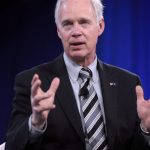Paul Bersebach/MediaNews Group/Orange County Register/Getty Images
- November saw quitting intensify across the US. New data reveals which states saw the biggest surges.
- Twenty-two states saw their quit rates climb, while only Colorado and Pennsylvania saw significant declines.
- Job openings rates fell markedly in 16 states, offering some hope to firms struggling to rehire.
Those hoping for the labor market to quickly recover throughout the US their hopes dashed in November as hiring slowed and job openings and quits soared.
But some states are faring far worse than others.
New job-openings data published Friday shed new light on how the workforce is recovering across the country.
Just two states – Colorado and Pennsylvania – saw their quit rates, or the share of workers who left their jobs, significantly decline in November, according to Job Openings and Labor Turnover Survey, or JOLTS, data released by the Bureau of Labor Statistics. Colorado’s rate fell to 3.5% from 4.0%, while Pennsylvania’s dipped to 2.4% from 2.7%.
Twenty-two states, however, saw their quit rates climb significantly through the month as the labor shortage charged forward. New Hampshire saw the biggest jump, with its quit rate rising to 4.5% from 2.9%, according to the Friday report. Georgia, Kentucky, and North Dakota followed, with each posting a 1.2 percentage point increase. Georgia and New Hampshire were home to the country’s highest quits rates in November, while Vermont followed with a rate of 4.4%.
The report reveals quitting broadly intensified across the US on the eve of the Omicron variant's surge. November's JOLTS data covers the period just before virus infections soared higher in December and turned parabolic in the final weeks of 2021.
On the whole, the US saw job openings total 10.6 million in November, down from the prior month's 11 million but still close to last year's record highs. Quits rocketed to a record 4.5 million, marking the fifth straight month with more than 4 million people walking out of their jobs.
December's lackluster jobs report – which only covers hiring through the middle of the month – already showed the Omicron wave hammered hiring. Unless the payrolls data is revised higher, it's likely the quits wave intensified as last year came to a close.
Job take-up hints at easier hiring on the horizon
The state JOLTS report isn't all bad for employers. Job openings rates fell significantly in 16 states and only increased in three, hinting businesses had an easier time finding workers. Minnesota saw the largest drop as its job openings rate sank to 6.1% from 8.1%. Michigan followed with a 1.4-point drop to 7.2%, while South Dakota saw its openings rate dip to 6.6% from 7.8%.
New Hampshire's job openings rate leaped to 7.9% from 7.1%, marking the biggest increase in November. New York and Connecticut followed with gains of 0.7 points and 0.5 points, respectively.
Alaska still hosts the country's highest openings rate of 8.8%, while Hawaii touts a rate of 8.3%.
To be sure, most states' openings rates remain well above levels seen before the COVID crisis, signaling firms are still having unusual difficulty matching workers with jobs. The nationwide rate hovered around 4.5% in the months just before the virus hit the US. While it's dropped slightly from October's record-high of 7.0%, the November average of 6.6% still points to extraordinary tightness in the labor market.
There are still millions of Americans waiting to rejoin the workforce. Labor force participation was flat in December and hasn't recovered at the same pace as job growth or the unemployment rate. Factors for the slow rebound range from virus fears to calls for higher wages.
The country has seen "some improvement" in pulling people off the sidelines, but participation remains well below desired levels, Federal Reserve Chair Jerome Powell said in a December press conference. While economists previously expected workers to return when schools reopened and vaccinations increased, that hasn't happened.
"How long the labor shortages will persist is unclear, particularly if additional waves of the virus occur," Powell said. "The labor market is, by so many measures, hotter than it ever ran in the last expansion, if you think about it."
Powered by WPeMatico






